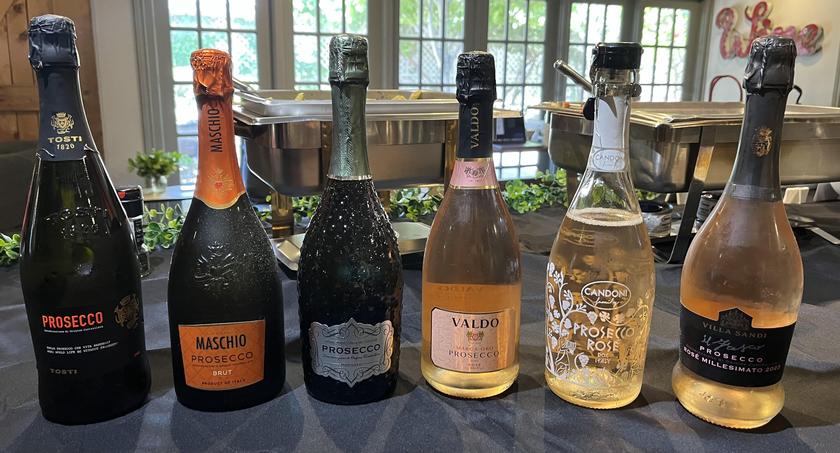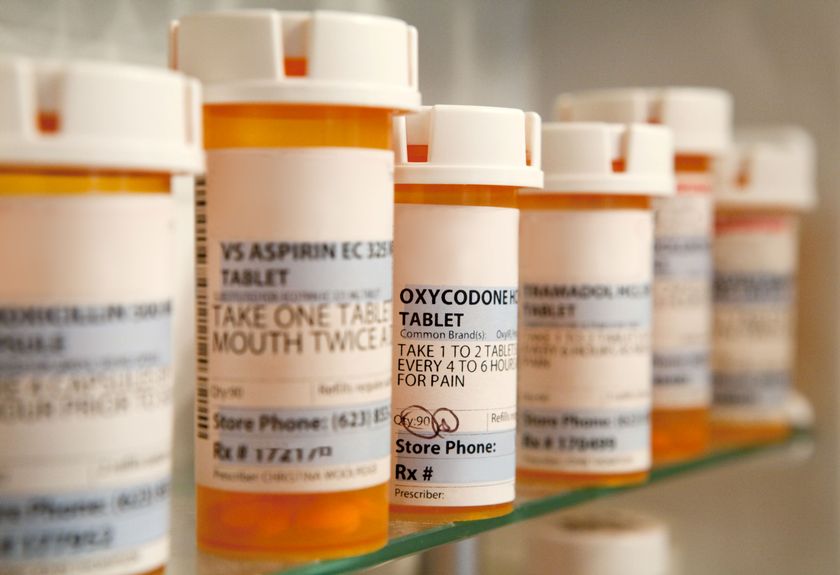- Sections :
- Crime & Public Safety
- Restaurants & Food
- Sports
- More
A Sip and A Thought (Field Day): Texas Wine School Celebrates 'National Prosecco Week'
HOUSTON, TX -- When you are an influential member of the media like I am, lol, you get invited to things. Some I can make, others I can’t, but when wine is on the line. I will travel to Houston. And I did. Did you know that Houston has a school just for individuals who want to be educated in wines? It's called ‘The Texas Wine School,’ and they train everyone from novices with short one-time classes, up to Level 4 Diploma Classes, and other certifications that sommeliers are looking for. But I was there for something else entirely. Champagne? Well, not exactly. ‘Prosecco.’ It’s a sparkling or semi-sparkling wine, made from the Prosecco (renamed ‘Glera’) grape grown in a nine province region in northeastern Italy. It is classified as an Italian DOC, which means that the grapes for the product must come from a controlled designation of origin.
So with ‘7th Annual National Prosecco Week’ starting June 24 - 30, I thought it best to try a few Prosecco varieties which was hosted by The Texas Wine School. The school’s campus has several things in combination. You have the school itself, with classrooms, along with a private lounging area for clients, but you also have the ‘Art of Cellaring Selections,’ a separate entity that houses a private wine cellar for clients, and AOCS itself has their own cellar, where they sell wines to clients locally to internationally. AOCS’s top bottles range up to over $3,000 dollars per bottle, while clients in the private cellars have very expensive bottles on store, some, like the ‘2013 Domaine de La Romanee Conti | Romanee Conti,’ ranged up to nearly $40,000 per bottle, so it’s a constantly appreciating investment. The private lockers are climate controlled with generator backup. And of all the people invited, I was the only one given the tour.
I was in a group of invited influencers and other individuals in the hospitality industry. The presentation was led by Master Sommelier Brandon Kerne, who is one of the few sommeliers’ in The World to hold the title. As of 2021, he was number 270, from when the test was first instituted in 1973. Each Prosecco DOC bottle comes with a special label to make it clear that it is the real deal, and even with all that hassle, the bottles I tried had price points from $12 - $16 dollars, all made with the average consumer with expendable cash in mind.
I first tried the ‘Tosti Prosecco DOC Extra Dry,’ which on the scale of dryness for sparkling wine is right of center in terms of sweetness, with 16 g/L of sugar. It still had a touch of sweetness and was not overpowering. I felt no need to pucker. I enjoyed the aroma of apple, peach, pear, and lemon. It felt a little minerally, and as one who has been pumped full of iodine prior to my numerous MRI’s, it was nothing to me (the hazards of being a disabled veteran). I enjoyed its very light brown to yellow color as it sparkled in the light. It was fruity, and well balanced in terms of aroma versus the slight bitters of the tail end of the sip. And I drew no concern over the aftertaste.
The ‘Maschio Prosecco DOC Brut’ was the next offering, and even though it was 12 g/L of sugar, in a way it tasted sweeter than the Extra Dry even though less sugar is added during fermentation. That may be because the nose, or its aroma, is more fruity and floral, having hints of apple, pear, peach, orange, and almonds. I noticed the finer bubbles, or perlage, also called mousse, which were more abundant with this pour, and accounted for the sweeter taste on that palate. And again, the slight minerality taste was ever present, but it wasn’t a concern. It was of similar color to the Extra Dry, and its finish was pleasant and still bubbly.
Next was the ‘Pizzolato Prosecco DOC Brut,’ which of the lighter colored wines was the driest, with 8 g/L of sugar, and it tasted more like a classic champagne. The nose reveals aromas of citrus more distinct like lemon zest, pear, and peach. Then there is almond, along with a hint of cucumber. The taste of the flavors were tighter, with a more lemony taste than the first two samples. And the fruits I felt were not as ripe, with everything probably coming together earlier in the season than the other two.
Although the Prosecco grape was its name for well over five hundred years, descriptions of it go back to Roman times with Pliny the Elder. It wasn’t until 2009 the name of the grape was changed to Glera, to protect the Prosecco name as a region across The World. And as of 2020, new ‘Prosecco DOC Rose’s’ have come into the market, with a combination of the Glera (minimum 85%) and Pinot Noir grapes (between 10 - 15%).
I tried a trio of Prosecco Rose styles, which had a bit more body and weight to them, and with the Glera grape it allows for more diversity in styles in terms of pairings. The ‘Candoni Prosecco DOC Rose Extra Dry’ 2021, which is a light pink, has an 85/15 blend. I found it refreshing with the addition of berries, appreciated its earthiness, and enjoyed the elongated aftertaste. The ‘Valdo Marco Oro Prosecco DOC Rose Brut,’ 2022, a 85/10 blend, is a bit lighter with less Pinot Noir added. The nose reveals touches of apple, pear, and other red fruits. On the palate, it's dry (the second driest of all the wines I tasted), but I still found it fruity and pleasant. The ‘Villa Sandi Il Prosecco DOC Rose Brut’ 2023, also an 85/10 blend, comes across as fruitier, despite being the driest of the two flights. The light pink gives way to copper tones, and it has a pleasant silky balance on the palate, with its red fruits and floral scents.
If you are interested in learning about wines as a hobby, or even as a profession, The Houston Wine School is a great place to engage in your passion. I learned so much in my short few hours on the campus, and look forward to going back soon. So if you enjoy Prosecco’s ability to engage fruit in your bubbly, and appreciate lower price points, a bottle may be in your future.
Alcohol Disclaimer: This column is intended for entertainment purposes only. Please drink responsibly, not just for yourself, but for others around you.
The Texas Wine School is located at 2301 Portsmouth St. in Houston. Their website is: artofcellaring.com has links to buying, storing, and learning about wine.
Ruben can be reached at: ruben@montgomerycountynews.net



















